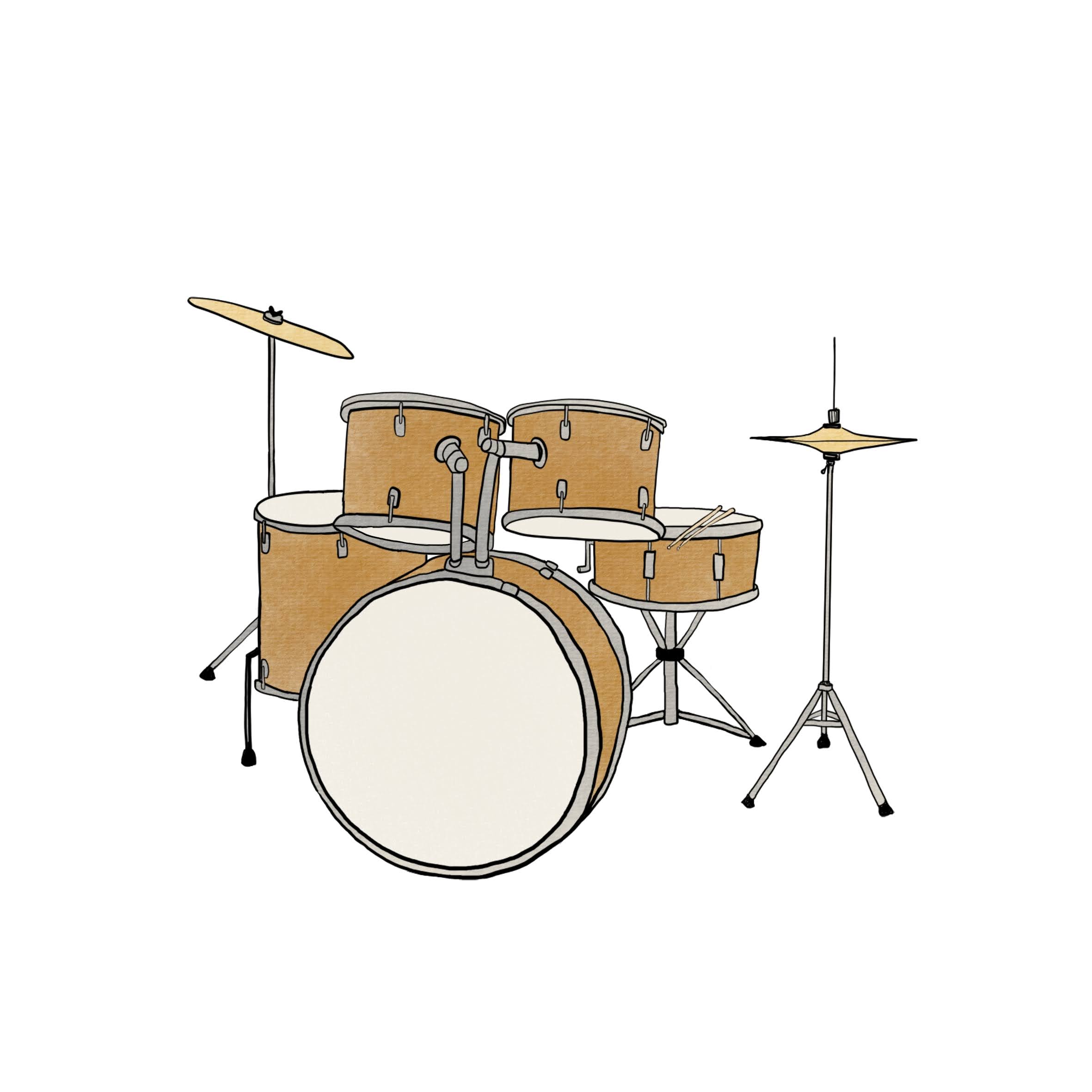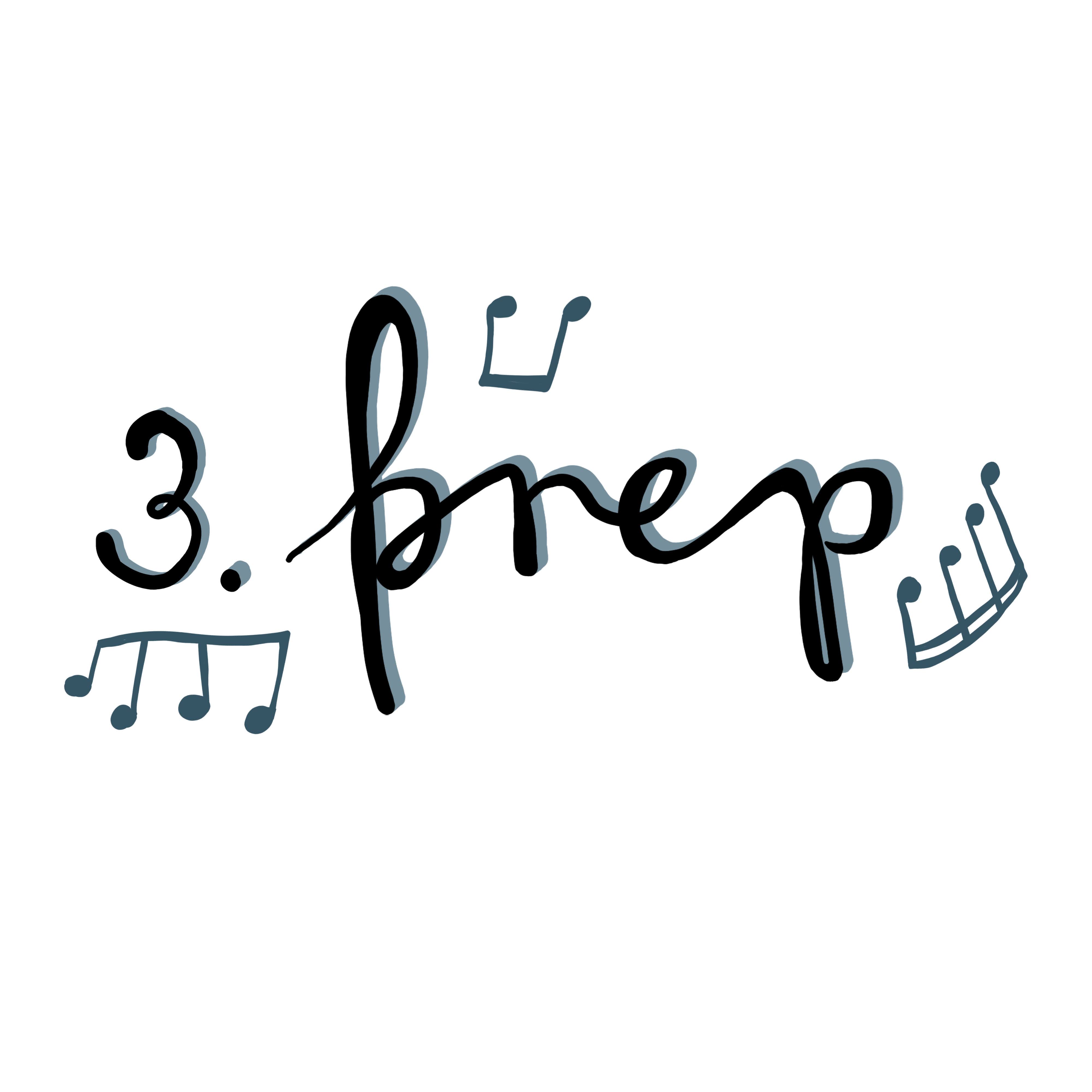Learning objectives - Percussion

Few instruments have a history as extensive as percussion instruments. They have always been a central part of folk music around the world and have also played an important role in classical music for a long time. For decades, percussion instruments have been fundamental in rock, pop, and jazz music.
Level 1
Range: bes – f”

Scales
| Range | One octave |
| Tempo | M.M = 96, scales played in quarter notes |
| Scales | C major and F major |
| Triads | In all the above keys |
| Chromatic |
Snare drum
| Single stroke roll (one at a time) |
MM = 72, 16th notes |
| Double stroke roll (two at a time) |
MM = 72, 16th notes |
| Paradiddle |
Works and exercises
* The student performs either the exercise or the piece on a mallet keyboard
| Piece | Snare drum – On Parade from Graded 1+2 Mallet keyboard * – Melody in C from Fundamentals of Mallet Playing Drum set – exercise on page 26 from Kennslubók í trommuleik (The Drum Playing Instruction Book) (or a similar piece) |
| Practice | Snare drum – Tempo Timekeeper from Graded 1+2 Drum set – exercises on pages 18, 20, and 23 from Kennslubók í trommuleik (The Drum Playing Instruction Book) Mallet keyboard * – Melody in F from Fundamentals of Mallet Playing (or another similar exercise) |
| Option |
|
| Sight reading | In Level 1, sight-reading is not tested. Understand reading whole and half notes, quarter and eighth notes. Also rhythms with quarter notes + eighth notes |
| Study material |
|
Level 2
Range: a – g”

Scales
| Range | One octave |
| Tempo | M.M = 120, scales played in quarter notes |
| Scales | C major, F major, G major, and A minor (melodic) |
| Triads | In all the above keys |
| Chromatic |
Snare drum
| Single stroke roll (one at a time) |
MM = 90, 16th notes |
| Double stroke roll (two at a time) |
MM = 90, 16th notes |
| Paradiddle | MM = 84, 16th notes |
| Single stroke (flam) | MM = 84, quarter notes |
| Double stroke (drag) | MM = 84, quarter notes |
Works and exercises
* The student performs either the exercise or the piece on a mallet keyboard
| Piece | Snare drum – Step Lightly by Beat it out from Graded 1+2 Mallet keyboard * – Entrée by L. Mozart from Fundamental Std. by Whaley (or similar) Drum Set – Exercise on page 30 from Kennslubók í trommuleik (The Drum Playing Instruction Book) (or a similar piece) |
||
| Practice | Snare drum – Ben Marcato by Mind the Accent from Graded 1+2 Drum Set – Exercises on pages 26 and 28 from Kennslubók í trommuleik (The Drum Playing Instruction Book) Mallet keyboard * – Reading Studies in C major by M. Peters (or another similar exercise) |
||
| Option |
|
||
| Sight reading |
|
||
| Study material |
|
Level 3
Range: g – a”

Scales
| Range | One octave |
| Tempo | M.M = 60, scales played in eighth notes |
| Scales | C major, F major, G major, B major, D major, A minor, E minor, and D minor (melodic) |
| Triads | In all the above keys |
| Chromatic | an eighth, c’ – c” |
Snare drum
| Single stroke roll (one at a time) |
MM = 100, 16th notes |
| Double stroke roll (two at a time) |
MM = 100, 16th notes |
| Paradiddle (I. samhengja) |
MM = 92, 16th notes |
| Single stroke (flam) |
MM = 110, quarter notes |
| Double stroke (drag) |
MM = 84, quarter notes |
| Five stroke roll |
MM = 84, quarter notes (based on playing 32nd notes) |
| Nine stroke roll (or eleven stroke roll) |
MM = 84, quarter notes (based on playing 32nd notes) |
Works and exercises
* The student performs either the exercise or the piece on a mallet keyboard
| Piece | Snare drum – Flam & Drag from Graded 1+2 (or similar) Mallet keyboard * – Minuets by Bach. (or similar) Drum set – exercise on page 44 from Kennslubók í trommuleik (The Drum Playing Instruction Book) (or similar) |
| Practice | Snare drum – Three Step from Graded 1+2 Drum set – exercise on page 40 from Kennslubók í trommuleik (The Drum Playing Instruction Book) (or similar) Mallet keyboard * – Reading Studies from Fundamental Methods for Mallets in appropriate ranges. |
| Option |
|
| Sight reading | Sight-reading is tested for both snare drum and mallets Understand reading whole and half notes, quarter and sixteenth notes Syncopation and dotted rhythms 6/8, 5/4, 9/8 and 12/8 time signatures |
| Study material |
|
Level 4
Range: g – c”’
Basic exam

Scales
| Range | One octave |
| Tempo | M.M = 63, scales played in eighth notes |
| Scales | C major, F major, G major, B major, D major, A minor, E minor, G minor B minor and D minor (melodic) |
| Triads | In all the above keys |
| Chromatic | an eighth, c’ – c” |
Snare drum
| Single stroke roll (one at a time) | MM = 120, 16th notes |
| Double stroke roll (two at a time) | MM = 100, 16th notes |
| Paradiddle | MM = 92, 16th notes |
| Single stroke (flam) | MM = 120, quarter notes |
| Double stroke (drag) | MM = 90, quarter notes |
| Triple stroke roll (ruff) | MM = 60, quarter notes |
| Five stroke roll | MM = 90, quarter notes (based on playing 32nd notes) |
| Seven stroke roll | MM = 76, quarter notes (based on playing 32nd notes) |
| Nine stroke roll (or eleven stroke roll) | MM = 96, quarter notes (based on playing 32nd notes) |
| Closed roll |
Works and exercises
* The student performs either the exercise or the piece on a mallet keyboard
| Piece | Snare drum – 5 stroke from Graded 3-4 (or similar) Mallet keyboard * – Minuets by Bach (or similar) Drum set – exercise on page 48 from Kennslubók í trommuleik (The Drum Playing Instruction Book) (or similar) |
| Practice | Snare drum – Marche Grandioso from Graded 3-4 (or similar) Drum set – exercise on page 47 from Kennslubók í trommuleik (The Drum Playing Instruction Book) (or similar) Mallet keyboard * – Reading Studies from Fundamental Methods for Mallets in appropriate ranges. |
| Option |
|
| Sight reading | Sight-reading is tested for both snare drum and mallets Understand reading whole and half notes, quarter and sixteenth notes Syncopation and dotted rhythms 6/8, 5/4, 9/8 and 12/8 time signatures |
| Study material |
|